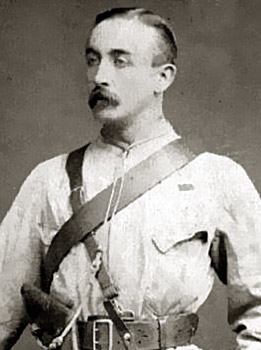 Lord Minto was appointed the Viceroy of India in the year 1905 after the resignation of Lord Curzon and served office till 1910. He was the 4th Earl of Minto and the grandson of the first Lord Minto, who was appointed the Governor General of India from 1807-1813. The period when Minto succeeded Lord Curzon, India was experiencing crisis. Lord Curzon had the left behind ill-feeling and discontent among the Indian people on the issue of partition of Bengal. Thus, Lord Minto`s first consideration was to alleviate the general unrest in the country. In this regard, he had used his experience of being a member of armed forces. Minto had also gained experience in the second Afghan War, in Egypt and Canada
Lord Minto was appointed the Viceroy of India in the year 1905 after the resignation of Lord Curzon and served office till 1910. He was the 4th Earl of Minto and the grandson of the first Lord Minto, who was appointed the Governor General of India from 1807-1813. The period when Minto succeeded Lord Curzon, India was experiencing crisis. Lord Curzon had the left behind ill-feeling and discontent among the Indian people on the issue of partition of Bengal. Thus, Lord Minto`s first consideration was to alleviate the general unrest in the country. In this regard, he had used his experience of being a member of armed forces. Minto had also gained experience in the second Afghan War, in Egypt and Canada
The period when Lord Minto served as the Indian Viceroy, Lord Morley became the Secretary of State for India in December 1905. Minto hoped to bring about at least the moderate sections by the policy of concessions. Thus, with the approval of Lord Morley, he appointed a committee drawn from his Executive Council to inquire into the means of associate Indians closely with the administration of the country.
The political atmosphere in India was quite perturbed at that time and Minto tried to bring about a solution by forwarding his opinions to His Majesty`s Government. In a committee report, the Government of India set themselves the task of considering how they could liberalize their power while still retaining control. They hoped to create a constitution which would be regarded as a precious possession.
During his tenure, Lord Minto had to face challenge from two sides, firstly, the Congress demanded popular participation in the government and secondly a new class of patriots, young and educated comes forward with the determination to fight the struggle of Indian independence. The revolutionaries hurled bombs even at Lord and Lady Minto during their visit to Ahmedabad. Lord Minto tried to repress the unrest through penalizing legislation and action. Many revolutionaries such as Lala Lajpat Rai, Bipin Chandra Pal and Aurobindo Ghosh were deported and a host of others were arrested.
Lord Minto along with the Secretary of State Lord Morley tried to encourage and reward the loyalty. Finally, the Morley-Minto reforms came into being after prolonged deliberations and the Muslim demands expressed through the Simla deputation. However, at its Lahore Session held in December 1909, the Congress expressed its dissatisfaction in regard to the share of representation given to the Muslims by the Morley-Minto Reforms; according to the Congress it was unfair and biased. On the other hand the Muslims were satisfied with Minto for his declaration that the Partition of Bengal was a settled fact and separate electorate would be granted to them.
Other important works of Lord Minto included his nomination of two Indians Sir Satyendra Prasanna Sinha or Lord Sinha of Raipur to the Secretary of State`s Council to the Governor General`s Executive Council and one to each of the Provincial Executive Councils. An Indian was also made a member of the Privy Council. Minto passed the Indian Press Act of 1910 laying down heavy fines and penalty of Press for rebellious publications. According to the Act any kind of independent criticism of the Government was prohibited. Thus, Lord Minto had to face increasing unpopularity and finally, he resigned in November 1910.



















